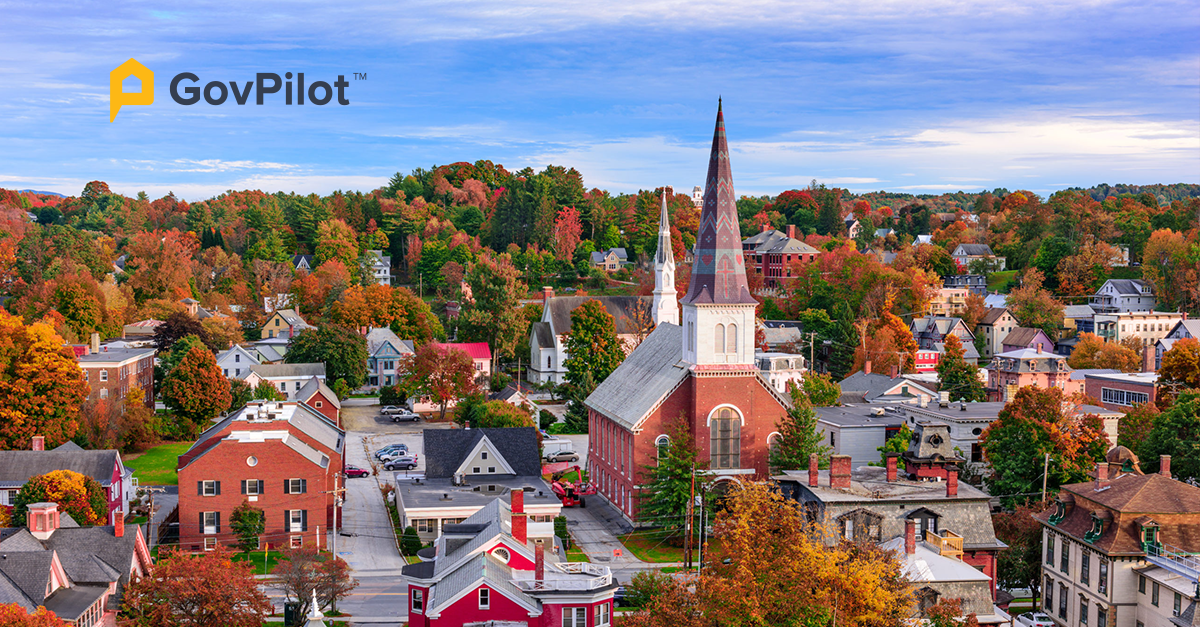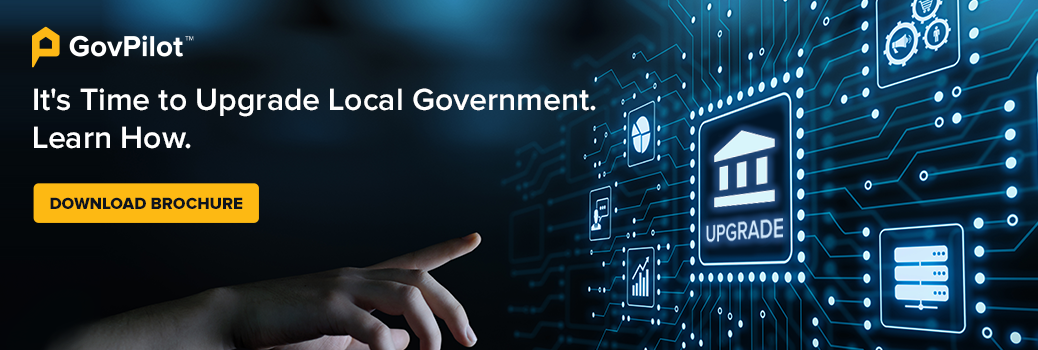There’s no doubt about it, even as the country continues to re-open, work culture is never going to be the same. People who once commuted hours a day suddenly had the luxury to sip on a Keurig coffee and work in pajama pants at home. Simultaneously, people that opted to live in the most expensive cities like New York, San Francisco, and Los Angeles in order to be close to high-paying jobs, suddenly had the option to work from a new remote location with a substantially lower cost of living.
As California declared a decline in population for the first time ever, secondary cities like Miami, Denver, Austin, and Chattanooga are seeing population growth like never before. While this is exciting news for the economic development of these secondary cities, many other municipal governments like Burlington, Greenville, Provo, and Des Moines are now welcoming unprecedented numbers of new, tech savvy community members moving in, creating so-called “Zoom Towns”. Even before the pandemic, some states like Vermont, were offering incentives - $10,000 - to draw new workers and residents.
Adjusting accordingly to a rising population can be a daunting task for government workers in secondary and tertiary cities where new, young, tech-forward residents will expect digital services. Follow along to learn about how digital government innovation can help your community to overcome these challenges.
Why Are Americans Leaving Major Cities?
There are many reasons that people are leaving places like New York and California, but one explanation seems the most obvious: the cost of living. Historically, people have been willing to deal with expensive rent and cost of living costs because the salaries in these places are equally high.
However, with advancements in technology, these same people no longer need to live in an expensive shoebox in Manhattan to be close to an office with a high paying job. For the first time ever, they can retain that high salary from a new, less costly location by working remote.
What Types of Americans Are Moving?
Typically, the Americans relocating during the pandemic have been either young professionals or young families.
These are tech savvy remote workers that have grown accustomed to the convenience of digital services like getting food ordered to your doorstep or booking a ride or flight from the touch of a screen.
What Does This Mean For Local Governments?
If your new constituents are not willing to drive up the road for a bite, they are definitely not going to want to drive to the city hall to fill out a permit form, nor do they feel like waiting on hold to report a pothole.
To keep everyone happy, growing secondary and tertiary cities will need to make sure that their constituents can use computers or cell phones to file forms, permits, and applications or otherwise contact the local government digitally.
How Can Secondary Governments Adapt?
While digital transformation has already occurred in many municipalities across the country, the pressure to update technology in antiquated secondary cities and suburban towns is more intense than ever.
Local governments not only face mounting expectations from citizens that services be made convenient through a digital format, but local officials are beginning to understand that digital transformation and the use of organized data can make local governments operate far more efficiently and productively. Furthermore, the sharp increase in cyberattacks and ransomware threats should be reason enough to seriously consider modernizing IT systems and government software.
Fortunately, making the switch is not as challenging as many government officials and employees might think, especially with the Federal government allowing municipal governments to spend their American Rescue Plan relief money on IT infrastructure.
Here are the ways that tertiary and secondary cities can keep new and old constituents happy with digital services:
1. Digitized Forms For Permits and Licenses
Having to download a PDF, print it out, fill out personal information, and drive to the town hall to fill out a permit or license is too much work for your busy constituents. Even if your government has fillable PDFs on your website, employees in the office will still need to manually re-enter the data that they receive, and still those PDFs might be incomplete when submitted, creating extra unnecessary work.
With government management software, community members will be able to select from a set of forms on their local government website and fill out their information online. The information in the digital form will then be automatically distributed to the relevant government department via the cloud to be processed digitally. Once the local government approves / denies a permit or license, the constituent will receive a notification automatically from the software on their status.
How convenient!
2. Report-A-Concern Software
We’ve all dealt with frustrating issues like a massive pothole, a down electrical wire, or construction that starts too early in the morning, but for most people, sitting on hold with the local government to report a concern is a daunting, unattractive task. As a result, many issues go unreported, prolonging public health and safety issues.
Luckily, with government complaint management software, constituents can easily take action and notify their local leadership of important issues that need to be addressed. Upon acquiring the GovPilot platform, your community will be able to add the report a concern module to your website and let constituents download a mobile application called GovAlert, giving them two simple ways to file complaints online.
Once you notify your community of the ease with which they can report concerns, the complaints will start rolling in. Not to worry! Employees will be able to track, process, and assign inspectors or the relevant department to enforce the ordinance on construction start time or fill that pothole. Employees can even complete inspections from the field with a mobile app called GovInspect, which will update records across the GovPilot platform in real time! No more driving back to the office to manually enter data from a clipboard. Best of all, constituents will be able to check the app to see the resolution status of their reported concern.
What better way to encourage civic engagement?
3. Geographic Mapping Software (GIS)
GIS maps are a win for community members and government workers alike. With a color-coded GIS map, constituents can instantly check on what’s happening in their community. Things like roadwork, flood maps, and reported concerns will seamlessly be integrated into your GIS map and will be accessible to everyone from your local government website.
Other details like economic zones and voting districts are also readily built-in to the software as well, meaning constituents will no longer need to call or email the government to find out about this critical information. That saves everyone time.
4. Online Real Estate Auctions
As people continue to move around the country, perhaps the most critical decision they’ll need to make is where to live. Make things easier for them by allowing them to bid on a home in your community via the Internet.
Online real estate auctions will increase the number of bidders, allow potential constituents to seek out a home in your town from anywhere in the country, and will undoubtedly increase government revenue and economic development.
In Conclusion
A classic saying in business is that, “the customer is always right!” In this case, the same can be said for your constituents.
Even though tech-savvy constituents are putting the pressure on their local governments to make the move online, there’s no denying that the benefits of a digitized government are many for government officials as well. Government workers will be more organized, saving time (and money), and will generally enjoy the higher quality of their job that comes with the convenience of a cloud based infrastructure.
Learn how to ensure your municipality is competitive, efficient, and livable. Get a demo!
Secondary Cities FAQ
1. What is a Zoom Town?
A Zoom town is a community that experiences a significant population increase as remote work becomes more popular, especially in the wake of the COVID-19 pandemic. The shift is expected to have significant economic implications. The name is a play on "boomtown" and the name of the web conferencing tool Zoom.
2. Why are Americans moving to Secondary and Tertiary cities and towns?
Many Americans due to the COVID-19 pandemic have found that working remotely is sustainable for them and their employer long-term and have sought to leave big, dense, expensive cities like New York and San Francisco, for smaller cities and towns with lower rents, lower cost of living, and more ample living space and easier access to the outdoors.
3. Why should leaders of smaller cities and towns embrace digital transformation?
With younger, tech savvy workers looking for a better, more balanced way of life now moving into smaller towns, it is important for those municipalities to provide the kind of convenient, digital services they have come to expect in other aspects of their life. By doing so, these smaller municipalities will become attractive destinations for those looking to move.










